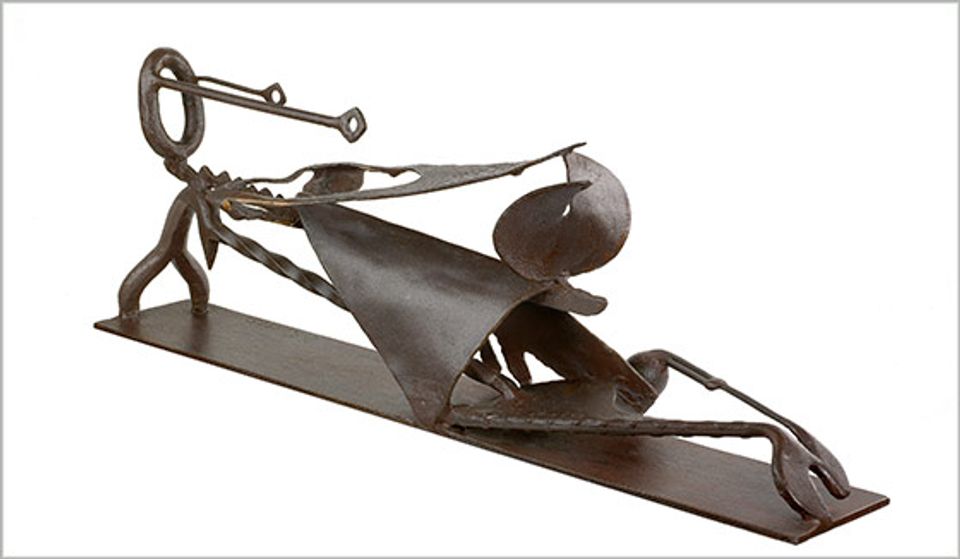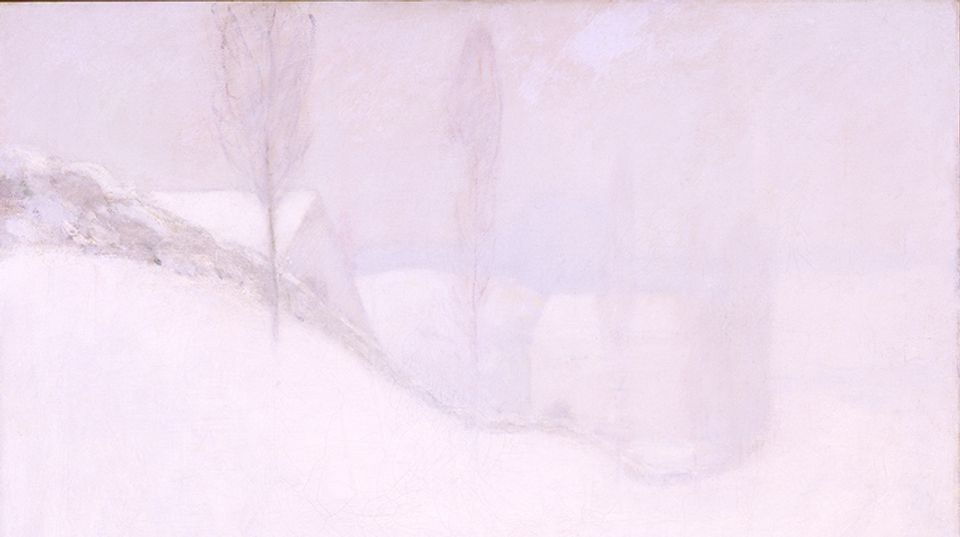

One word that comes to mind when visiting the newly opened exhibition, Crosscurrents: Modern Art from the Sam Rose and Julie Walters Collection, is liberation. It's not just one generation breaking from the one before, it's a sense that the modern twentieth century opened a world never before imagined. The image is liberated, the line is liberated, and the artist is our guide through this beautifully fractured world. And with nine paintings and nine ceramic works in the exhibition, Spaniard Pablo Picasso's place as the nexus of modernism is abundantly clear.
In 1934, back in the States, American sculptor David Smith set up shop in a corner of Terminal Iron Works, an industrial metal workshop he described as consisting of a ramshackle series of buildings on the Brooklyn waterfront. There, he began making sculptures, often from found objects welded together into assemblages. One year later, he created Reclining Figure. As a young man, he learned how to work with metal when he was employed at a Studebacker automotive plant in his native Indiana. During this period, Smith began reading the French art magazine, Cahiers d'Art where he first encountered the works in metal by the avant-garde artists Alberto Giacometti, Julio Gonzáles, and Picasso himself. One of Smith's earliest welded sculptures, the piece has reconstructed the feminine form, in much the same way the European artists were re-figuring portraiture and representations of the body.
Crosscurrents gives you the rare opportunity to see a significant collection of works by Picasso at the museum. Picasso used paint to break from traditional forms; Smith used scrap metala purely American way of seeing things. In 1952 Smith created Agricola IV (also featured in the exhibition), and his work seemed to gain a new freedom, a fresh liberation. According to chief curator Virginia Mecklenburg, "Smith understood that sculpture can also be drawing in space, freed from literal associations."
The exhibition that includes works by Georgia O'Keeffe, Richard Diebenkorn, and Fernando Botero, among many others, comes together to form what Mecklenburg calls "a river of intellectual and artistic commerce that flowed both ways between America and Europe." The exhibition vibrates not only with correspondences between artists, but with color. The days may be getting shorter and the light more scarce, but light and color "and often a meeting of seriousness and play" abound in this thoughtfully curated exhibition.
This afternoon at 5:30 p.m., join us in the McEvoy Auditorium for a three-part program that explores European and American modernist artists in the exhibition. Speakers include collectors Sam Rose and Julie Walters in conversation with chief curator Virginia Mecklenburg; academic, writer, and cultural diplomat Annie Cohen-Solal; and Gijs van Hensbergen, art historian, food critic, and best-selling author.
Crosscurrents: Modern Art from the Sam Rose and Julie Walters Collection is located on the third floor of SAAM and runs through April 10, 2016. If you can't be there tonight watch it webcast live (and archived soon after the event).
















